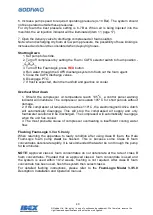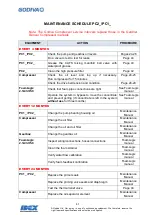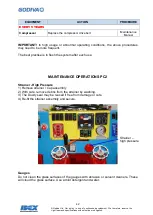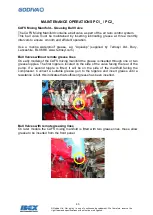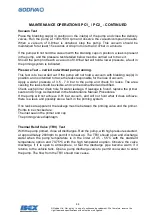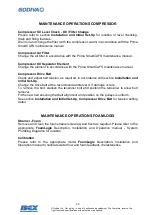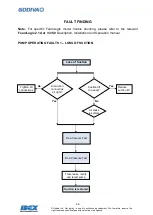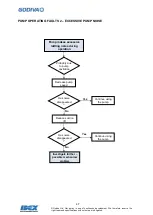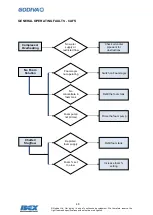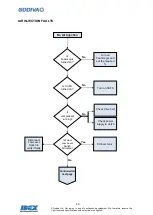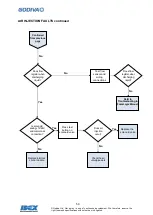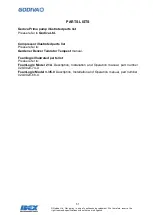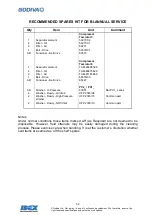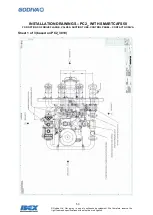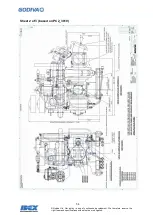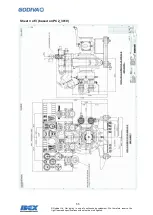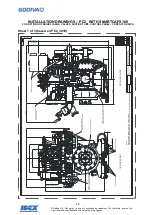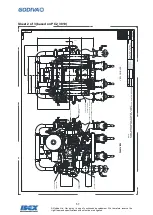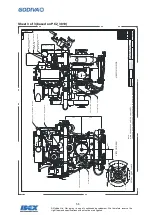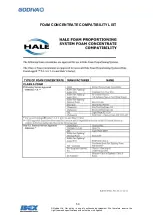
44
©Godiva Ltd. Our policy is one of continuous development. We therefore reserve the
right to amend specifications without notice or obligation.
MAINTENANCE OPERATIONS PC1_ / PC2_ - CONTINUED
Vacuum Test
Place the blanking cap(s) in position on the inlet(s) of the pump and close the delivery
valves. Run the pump at 1300-1500 rpm and observe the vacuum/compound needle.
When a vacuum of 0.81bar is obtained, stop the pump. This vacuum should be
maintained for at least 15 seconds or drop no more than 0.07bar in a minute.
If the pump will not hold the vacuum with the blanking caps in position, a leak is present
in the pump, and the pressure test detailed below must be carried out to trace it.
Should the pump not reach a vacuum of 0.81bar but will hold a lower pressure, a fault in
the priming system is indicated.
Pressure Test
– carried out without pump running.
This test is to be carried out if the pump will not hold a vacuum with blanking cap(s) in
position, and is intended to trace the leaks responsible for the loss of vacuum.
Apply a water pressure of 3.5 - 7.0 bar to the pump and check for leaks. The area
causing the leak should be visible, and can be dismantled and rectified.
Check each primer drain hole for water leakage. If leakage is found, replace the primer
seals and O rings as described in the Maintenance Manual Procedures.
If the pump will not achieve 0.81 bar vacuum, and will not hold what it does achieve,
there is a leak, and possibly also a fault, in the priming system.
If no leaks are apparent, the leakage must lie between the priming valve and the primer.
Points to be checked are:
The inlet seal in the primer end cap
The priming valve diaphragm
Thermal Relief Valve (TRV) Test
With the pump primed, close all discharges. Run the pump, with high pressure selected,
at approximately 2800rpm to permit it to heat up. The TRV should open and discharge
water when the pump temperature is in the order of 45 - 55°C with the standard
temperature option and 70-75
o
C with the high temperature option. Observe the valve
discharge, if it is open to atmosphere, or feel the discharge pipe become warm if it
returns to the vehicle tank. Open a pump discharge valve to permit cool water to enter
the pump. The flow from the TRV should now cease.











